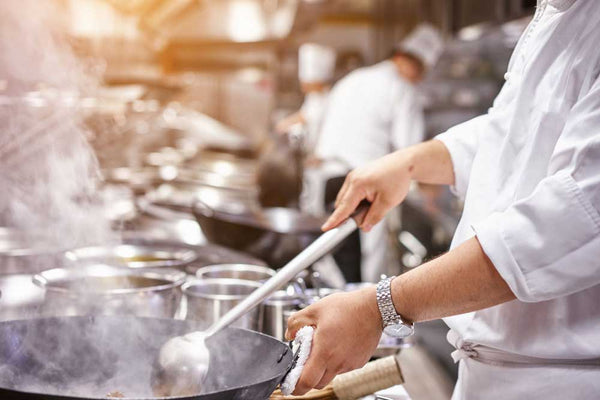Ways to Overcome Restaurant Labor Shortage

It's going to take some measure of planning and industry savvy for restaurants to survive what’s taking place right now – immense challenges related to coronavirus re-openings and economic changes involving a severe labor shortage in the restaurant business. Let's talk a little bit about the causes of this work shortage, and how to deal with it as a restaurant owner or business leader in the food service industry.
Why Is There a Restaurant Labor Shortage?
Today's labor shortage in the restaurant business (and elsewhere) has to do with basic free-market economics and worker incentives. Regardless of how people feel about it, (it's no surprise that employers and employees will view this differently), the consensus is that the work shortage is related to people staying home because they don't feel it's worth it to them to work a particular job or type of job.
Many believe the lack of a living wage is keeping people at home, combined with coronavirus stimulus packages including temporarily higher unemployment pay. Advocates for workers point to the fact that commonly offered restaurant wages don't allow someone to purchase affordable housing nearly anywhere in the country, or pay increased costs for things like insurance and telecommunications bills.
On the flip side of this, critics of the existing system say that people have found a way to live without working, an immense source of frustration for bosses who were previously trading on the need for all heads of households to seek full-time employment in order to stay afloat. News pundits point that Covid-19 has caused a fundamental sea change in how people see life, and work, and that’s going to impact the restaurant business.
How This Could Affect Your Restaurant
A labor shortage can affect the restaurant in several different ways, but the main one is evident in empty rooms and closed signs all over the country. Typically speaking, lack of available servers and cooks will lead to reduced restaurant hours and missed breakfast, lunch or dinner services that would have brought in additional capital for the business.
Over the past year, businesses had a different problem – they weren't able to seat diners inside, so they had to rely solely on take out or set up elaborate tents for on-site dining. Now that they can welcome diners back, they’re faced with the problem of how to staff both the kitchen and the front of the house. Restaurants that had enough cash to keep workers on through the pandemic or somehow keep them on roster are a step ahead, but those restaurants are few and far between.
How to Overcome the Restaurant Labor Shortage
Although every restaurant is different, there are a few general guidelines that will help restaurants to overcome the problems of declines in demand for restaurant jobs, and the types of reasons why people don't sign up for work. Employee benefits and incentives are one option.
Even big chains like Sheetz and Wawa are offering various types of sign-on bonuses in order to get people to come in the door. But that's probably not enough long-term. In addition, businesses are looking very carefully at living wage estimates in their areas, and raising wages accordingly. They’re also adding intangible perks like free food or employee discounts to entice talent, in the kitchen and in the dining room.
Technology is another big life-saver for restaurants. If your restaurant hasn't invested in technology that will help workers do their jobs in an easier way, it’s leaving money on the table at a time when restaurants can least afford to do so. Big equipment can automate some of the cooking process, or relieve some of the workplace challenges that workers hate – dealing with heavy weights, high heat, or other annoyances of the kitchen.
Yet another attractive move is to offer flexible scheduling. One thing that restaurant workers often hated about the industry was the erratic, unreliable working hours and punitive practices related to inking in a weekly and monthly schedule. To the extent that restaurants can allow people to have a better work/life balance, raising families and pursuing hobbies and going on vacation, they are better able to get everyone in a good mindset, in order to reduce turnover and keep the restaurant running smoothly. This can help your restaurant survive this part of the coronavirus pandemic response.
See our website for a vast array of tools and resources you can use to optimize your restaurant operations. At Chefs’ Toys, because we are “for chefs, by chefs” and have real kitchen experience, we know what you’re facing, and we can help!


















